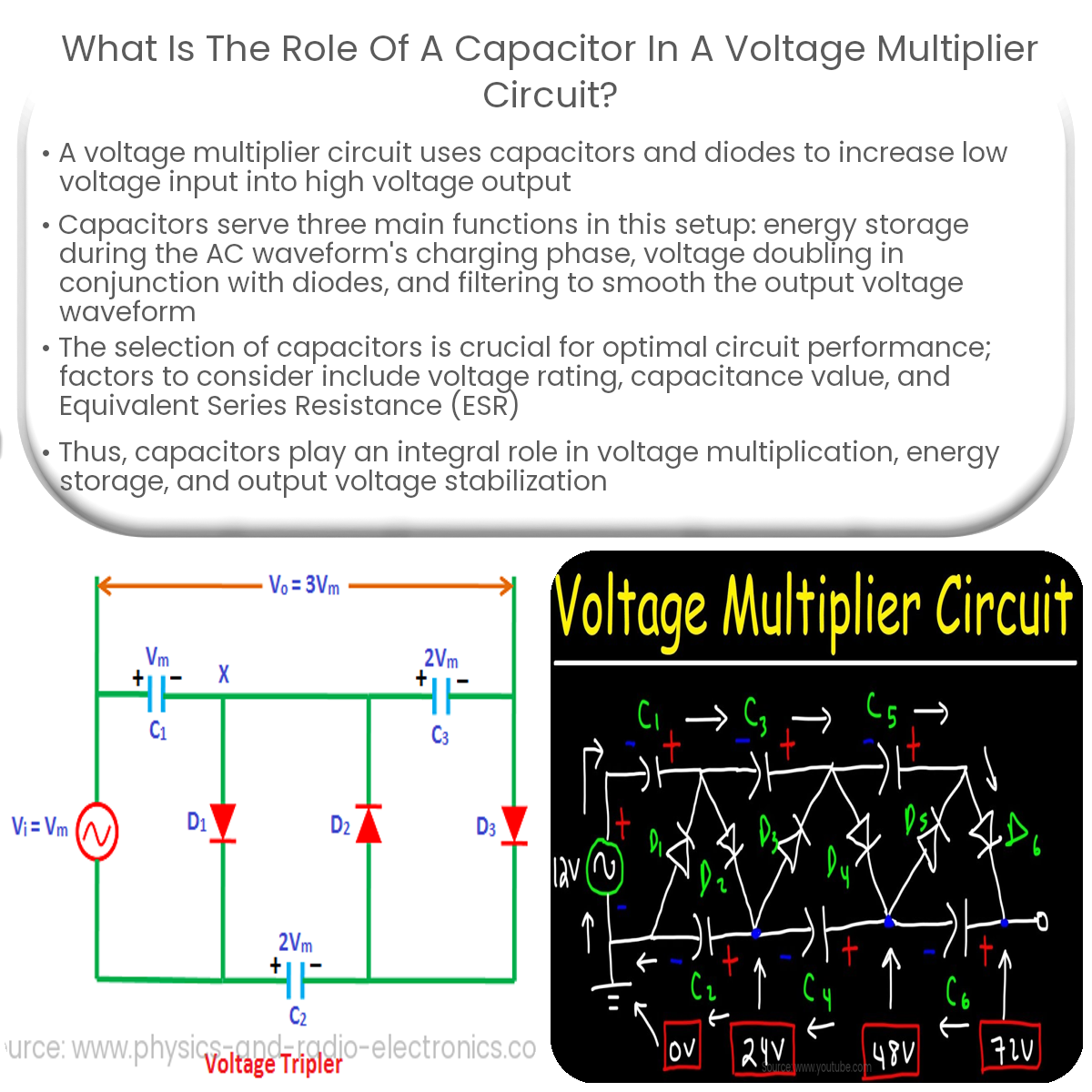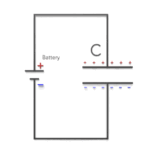In a voltage multiplier circuit, capacitors store energy, double the voltage in each stage, and filter the output voltage for a smooth waveform.
Role of a Capacitor in a Voltage Multiplier Circuit
A voltage multiplier is an electrical circuit that uses capacitors and diodes to generate a high voltage output from a relatively low voltage input. The main purpose of this type of circuit is to amplify the input voltage by a specific factor, which is determined by the configuration of the circuit components. In a voltage multiplier circuit, capacitors play a vital role in the performance and efficiency of the circuit.
Function of Capacitors in Voltage Multipliers
Capacitors are passive electronic components that store electrical energy in an electric field. In a voltage multiplier circuit, the capacitors work together with diodes to perform three main functions:
- Energy Storage: Capacitors store energy during the charging phase of the input AC waveform. This energy is then released during the discharging phase, effectively increasing the output voltage of the circuit.
- Voltage Doubling: Capacitors, along with diodes, form voltage doubler stages in a voltage multiplier circuit. Each voltage doubler stage consists of a capacitor and two diodes connected in a specific configuration. The capacitors charge during one half-cycle of the input AC waveform and discharge during the other half-cycle, effectively doubling the voltage across the output terminals.
- Filtering and Smoothing: Capacitors act as filters to smooth out the output voltage waveform. As the output voltage is a combination of the input voltage and the stored energy from the capacitors, it may contain voltage fluctuations or ripples. Capacitors help reduce these fluctuations, providing a more stable and consistent output voltage.
Selection of Capacitors for Voltage Multipliers
Choosing the right capacitor is crucial for the proper functioning and efficiency of a voltage multiplier circuit. The following factors should be considered when selecting capacitors for voltage multipliers:
- Voltage Rating: The voltage rating of a capacitor should be higher than the maximum voltage expected across it during operation. This ensures the capacitor can withstand the voltage without breaking down or experiencing a significant reduction in its lifespan.
- Capacitance Value: The capacitance value of a capacitor determines its ability to store energy and filter the output voltage waveform. Higher capacitance values generally result in better filtering and smoother output voltage waveforms, but may increase the physical size and cost of the capacitor.
- Equivalent Series Resistance (ESR): ESR is a measure of the internal resistance within a capacitor. Lower ESR values typically result in better performance, as they allow the capacitor to charge and discharge more efficiently, leading to improved voltage multiplication and output voltage stability.
In conclusion, capacitors play a critical role in voltage multiplier circuits, as they are responsible for energy storage, voltage doubling, and output voltage filtering. Proper selection of capacitors is essential for the efficient and reliable operation of voltage multiplier circuits.




